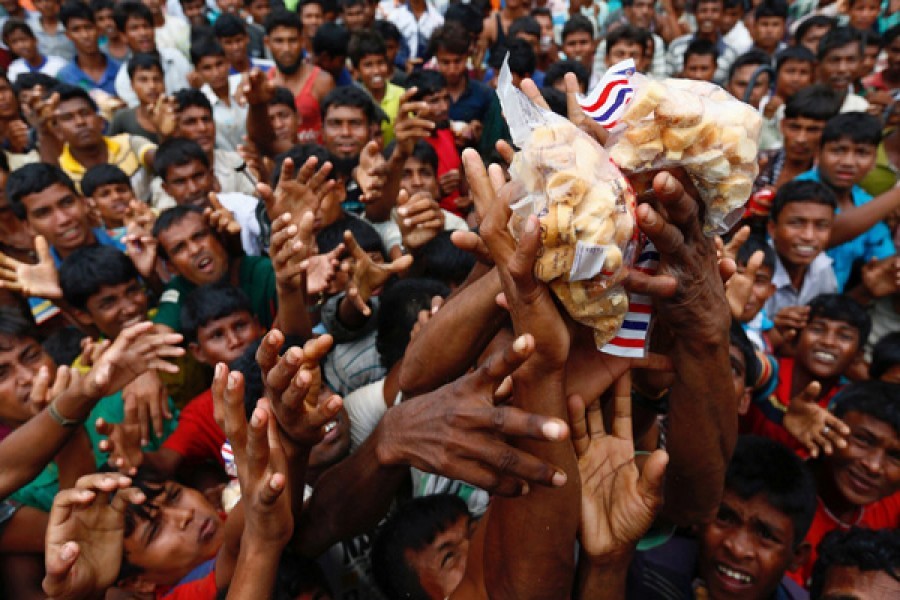It could be a damning commentary on the state of food security for Bangladesh but for the global dismal performance in achieving the set target on this score. Reports are highly disconcerting. According to a UN report titled, "The state of food security and nutrition in the world 2022: Repurposing food and agriculture policies to make healthy diets more affordable", as many as 120 million people out of a population of nearly 170 million cannot afford a healthy diet. India with 71 per cent of its population unable to afford a healthy meal finds in Bangladesh a close company. Now this runs counter to the Sustainable Development Goals (SDGs) set in 2015. SDG target 2.1 envisioned 'access to safe, nutritious and sufficient food for all people all year round' and SDG target 2.2 had the objective of eradication of malnutrition in all its forms by the year 2030. Both targets now look unachievable.
Involved here are two components of food security---a) safe and sufficient food for all and b) healthy or nutritious foods. This means prevalence of hunger does not only stare in the face of a large number of people but also their number is increasing. Not that the pandemic has been solely responsible for the exacerbation of food distribution. Prior to the Covid-19 pandemic in 2019, 690 million people or 8.9 per cent of the global population were undernourished and since 2014 the number of hungry people were also rising slowly. Given the continuation of the trend the number of hungry people globally will go past the 840 million mark by 2030. A combination of factors such as higher prices of healthy diets, increasing poverty and yawning income inequality particularly in the post-pandemic period has only threatened to swell the rank of the people deprived of healthy diets, estimated to be 3.0 billion spread in every region of the world.
So the case is not an exception for Bangladesh. But given the country's economic resilience, the silent hunger and nutritional status could be lower than those are. While 11.7 percent of global population faced severe food insecurity in 2021, Bangladesh's share of the problem was 10.7 per cent. But when it comes to malnourishment, the global level rose from 9.3 per cent in 2020 to 9.8 per cent in 2021 and for Bangladesh the rate was higher at 11.4 per cent in 2021. Food crisis and undernourishment in the country are not consistent with the global trend.
The quality of life of a people is best determined by both food intake and living condition. Bangladesh's economic progress has followed the free-market pattern, as evidenced by the filthy acquisition of wealth globally by the rich and superrich during and in the post-pandemic time, mostly bypassing the lowest segments of society. The pandemic has only exacerbated their purchasing power with abnormal price hikes of almost every conceivable essential required for human survival. Lower levels of living standard also compel people to get habituated with compromising practices for production, processing, preservation, marketing and even preparation/cooking and serving of food items. Along with addressing income inequality, there is a need for taking care of the constraints prevailing in all those areas.


